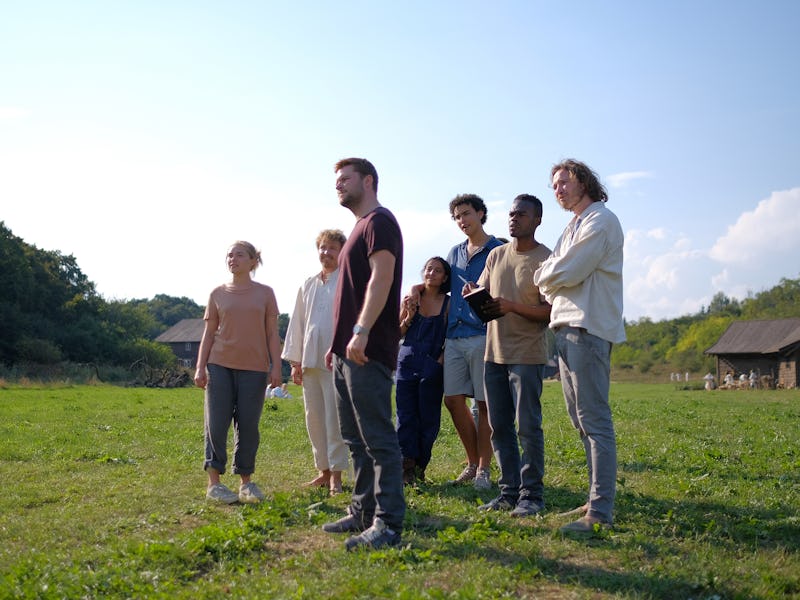Midsommar: The Real Reason for Midnight Sun, Axial Tilt, and a Chill Party
The midnight sun is a natural phenomenon in which the sun shines even at midnight.

The sun never sets in Midsommar. While that is a terrifying experience in Ari Aster’s newest folk horror movie, it’s been a way of life for millions who live under what’s known as the “Midnight Sun.” And while the geography is iffy in the film, the science actually makes a lot of sense.
In Midsommar, a group of American twenty-somethings embark on a thesis trip to Sweden, where they engage with a rural commune that celebrates a very, very old pagan religion.
The actual Midsummer celebrations do trace back to pagan traditions, and it’s just a chill seasonal party that is totally not giving me FOMO as I live through yet another humid-AF American summer. Look how chill this is:
Swedes celebrating actual midsommar.
The setting of Ari Aster’s Midsommar is purposefully vague; all we know is that it’s Sweden, the sun hardly sets — so they are fairly far north in Sweden — and the landscape is gorgeous. Until the bodies begin dropping, this vacation beats any spring break in Cancun.
The unending sun is played for scares in Midsommar, even in the movie’s trailer. While the American protagonists are freaked out by the blazing hot sun at 9 p.m. (and meant to unsettle viewers who aren’t used to the midnight sun), it’s actually a very normal occurrence.
The midnight sun is a natural phenomenon in which the sun shines even at midnight. You’ll usually find this along the Arctic (starting June 22 for summer solstice) and Antarctic circles (December 22 for winter solstice).
In Ari Aster's 'Midsommar,' the sun never sets as a group of twenty-somethings witness a very old pagan practice some alarming traditions.
Why this occurs is due to the tilt of the Earth’s axis. As the Earth tilts toward the sun in the summertime, the poles are exposed to sunlight for almost as long as six months.
If Earth were perpendicular to the axis, every part of the globe would have an even 12 hours of daylight and night. But the Earth instead tilts in a way that folks in places like Sweden are subject to a never-ending sun.
Other places that experience the midnight sun include parts of Finland, Norway, Denmark, Russia, Alaska, and the Canadian Yukon.
In the movie 'Midsommar', we see how the seasonal pagan celebration into something sinister.
In Midsommar, the fact it’s sunny at when it should be dark is an unmooring reality in which the characters find themselves.
“What time is it?”
“9 p.m.”
“That can’t be right, the sky is blue.”
“That’s what 9 p.m. is like here.”
The Americans in Midsommar seem perturbed by the midnight sun. While it makes for very appealing tourism in real life, movies tend to use the midnight sun to illustrate and unsettling or unnatural atmosphere, even though it is very natural. Christopher Nolan’s 2002 cerebral crime thriller Insomnia also took place in a region of Alaska that lies within the path of the midnight sun. (We see Al Pacino struggling to sleep as the midnight sun shines in through the curtains.)
Should you plan to visit Sweden (with hopefully less death than Midsommar), Visit Sweden advises you bring sleeping masks if you wish to sleep while visiting in the summer. Then again, why sleep? You’re on vacation. You can sleep when you’re back home engulfed in night.d
Read more Midsommar stories:
One of Ari Aster’s Favorite Movie May Reveal How ‘Midsommar’ Ends